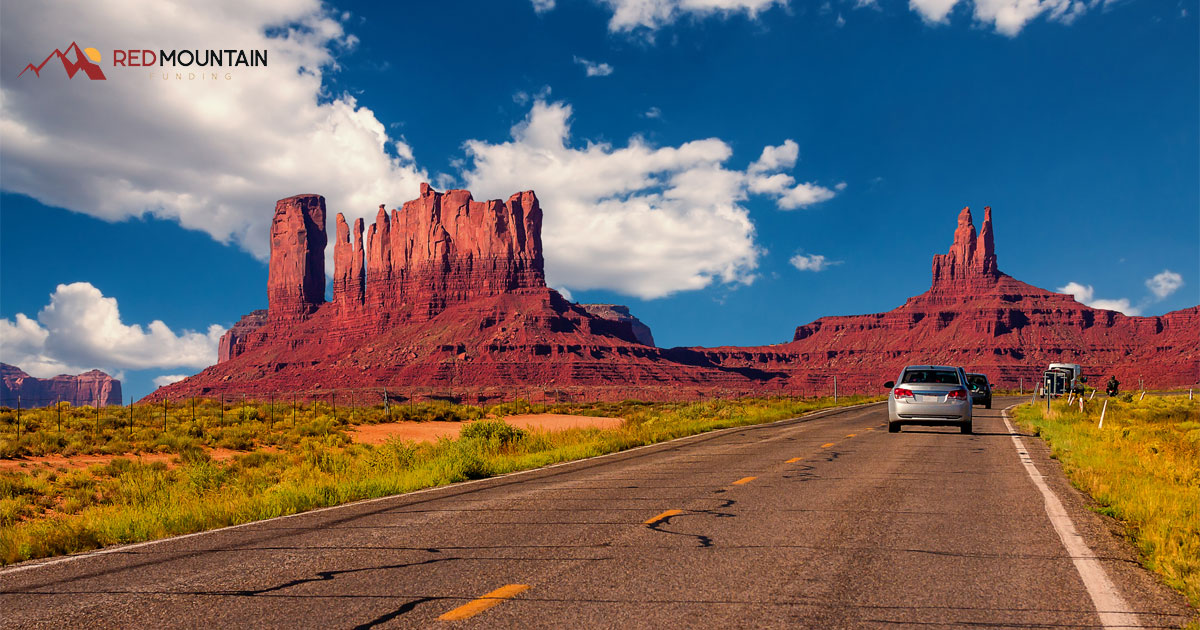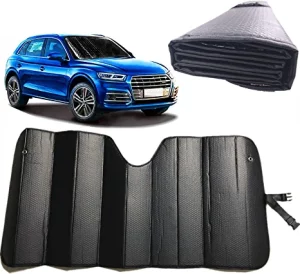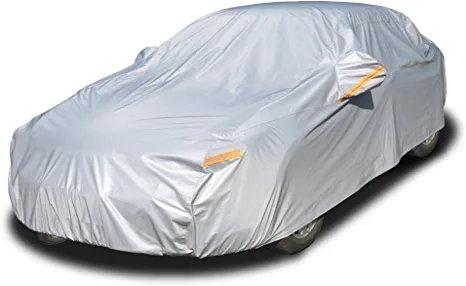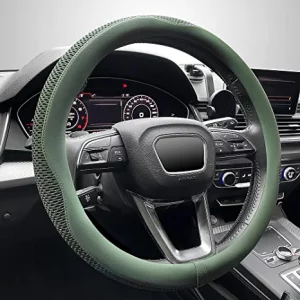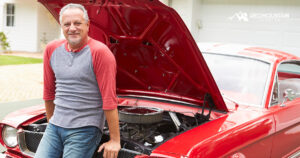Disclaimer: Some links on this page are affiliate links. We may receive a commission if you make a purchase through these links. See our full disclaimer here.
The sun’s UV rays are not only bad for your health but can cause damage to your vehicle. UV rays and the thermal energy (heat) they produce can dry out and damage plastic, leather, fabric, and other interior elements. The sun can also cause your paint to become oxidized, a chemical process that occurs when oxygen heat reduces the paint’s oil content and breaks it down. This can cause fading, dulling, and more. Cars are often among our largest expenditures, so maintaining your car’s quality as long as possible is critical to your financial health. If you can do so at little expense, that’s even better for your wallet.
Arizona’s climate is one of the hottest in the country, and the extreme heat and increased sun exposure can be extra hard on your ride. That’s why, if you live here in Arizona, it is crucial to know what to do to protect yourself and your car—especially during the summer. Here’s how to protect your car from heat and sun damage.
Protecting the Car’s Interior from Sun
Temperatures can rise to over 120 degrees Fahrenheit inside a vehicle parked in the sun, especially when exterior temps are as high as they are in Arizona. Worse, the heat stays trapped in the car for a long time and can cause considerable damage to the interior. Fortunately, there are methods you can use to protect your car’s interior from the heat and sun.

Park in the Shade
The direct sun is the source of UV rays that can damage plastic, leather, fabric, and more. If you can park in the shade, we would recommend you do so to reduce the number of UV rays that bathe critical components of your car’s interior, like the dash, console, and seat materials. The shade also keeps the temperature low, preventing drying and cracking of the dash and seats.
If you don’t have access to a garage, it’s worth it to take a couple of extra minutes to find a parking spot in the shade. You can also buy a canopy to protect your car from the heat. As another bonus, parking in the shade can reduce the UV rays that hit your car’s exterior and cause car paint oxidation.
Use Windshield and Window Protectors
We like this foldable car front window shade that you can pick up on Amazon. It’s easy to use, folds back up and has a clasp to keep it secure when not in use.
Consider Tint
Window tinting can reduce the UV rays that enter your car in the same way sunshades do, but it is a more permanent addition to your vehicle. Fortunately, this means that you will not need to remember to put a device in place when you exit your car. Reducing UV exposure means you can limit the impact of UV rays on your car’s interior and lower the interior temperature at the same time.
Use a Car Cover
We recommend this all weather, waterproof and UV ray protector car cover by Kayme. It’s heavy duty material and has a driver door zipper for easy access.
Cover Your Wheel, Cargo and Seats
Similarly, installing a grip on your wheel also allows you to easily grab the wheel without burning your hands. If your car seats or wheel cover are made of leather, consider purchasing a leather conditioner to keep the leather hydrated even if you choose to install a protective cover.
We love this microfiber steering wheel cover. It’s warm in the winter and cool in the summer. Plus, it looks cool.
Open Your Windows Slightly
Leaving your car windows wide open when parked is never a good idea, but cracking them just a little bit can improve air circulation and lower the car’s internal temperature. By doing this, you’ll improve airflow and reduce the heat trapped in your vehicle. This method should only be considered in extreme heat and if you’re parked in a safe location with no sign of rain.
Close Your Sunroof
If your car has a sunroof, make sure the interior cover is completely closed when you park. Your car’s temperature quickly increases due to the sun’s rays penetrating your windows and windshield, and more exposure via a sunroof can accelerate the process. Close your sunroof to reduce UV exposure and shade the interior as much as possible.
Preventing Sun Damage Under the Hood
By checking under your car’s hood more frequently during the warmest months of the year, you’ll ensure your car is running smoothly and not at risk of overheating. If you’re not car-savvy, meet with a professional mechanic who can assess essential components of your engine and cooling system and make suggestions to improve your car’s condition. If you prefer to perform checks yourself, here are a few things to consider when checking under the hood.
Coolant System
As mentioned, excessive heat caused by the powerful Arizona sun can overheat your car’s engine. In particular, you’re at risk of overheating if your coolant system is not in efficient working order. At every oil change, check to see if your coolant system’s belts are in good condition. You’ll also want to check if your antifreeze and coolant fluids are at the appropriate levels. Aging fluids or low levels of motor oil, brake fluid, and transmission fluid can also contribute to overheating.
Battery
Car batteries wear out over time, but the heat can accelerate this process. We recommend visiting a mechanic to make sure your battery is functioning properly, especially in the hot Arizona summertime. Using your car’s air conditioning for extended periods of time can cause excessive battery wear, and you don’t want to be without it when the sun is out.
Air Conditioning
Obviously, air conditioning is crucial when you’re on the road in the summer. While it’s important to check your car’s battery, you should also ensure other components of your car’s AC system are working efficiently during periods of heavy use. If it’s extremely hot outside, your car’s AC is working harder than usual, which can strain items like belts, pulleys, fans, and the entire coolant system.
Protecting Your Car’s Exterior from the Sun
Your car’s exterior is the most at risk for UV and heat damage in Arizona for obvious reasons. Although the look of your car might not always be integral to its performance, allowing the sun to damage your car can reduce its value. Ignoring the outside of your car can also lead to severe problems, and these are most common in the summer. Whether you’re concerned about faded car paint or low tire pressure, here’s what you can do to protect your car’s exterior.
Wash Your Car Regularly
Whether you prefer to go to the car wash or wash on your own, you’ll be able to get rid of debris, dust, dead bugs, and minerals. If you leave debris in place, it can scratch your car or worsen the effects of car paint oxidation. However, be sure to find a non-abrasive, gentle car wash system and avoid drying or polishing too hard to prevent causing swirls, scratches, and paint damage.
Apply Waxes and Sealants
Waxing your car not only helps your car look shinier, but it protects against the sun’s UV rays. Specially formulated waxes and sealants can add another layer to your car’s clear coat, protecting your car from debris and UV damage. In this way, waxing can help you prevent fading paint, dull shine, and pitted clear coat.
Protect Your Headlights
Just like your car’s paint and interior plastics, your headlights can begin to break down after exposure to the sun’s UV rays. The more they are exposed to the sun, the more yellowed and oxidized they’ll become. If headlights become cloudy, they are less effective in the evening, which is a dangerous situation for you and everyone else on the road. If your headlights are wearing out due to the sun and aren’t responsive to regular washing, try a headlight cleaning solution from your local auto parts store. Once they’re clean, try clear coating them or applying a vinyl film with UV protection.
Check Your Tire Pressure
An often-forgotten item when it comes to heat damage is your car’s tires. Tires can get incredibly hot driving on the pavement, especially in the Arizona summer, putting you at risk of a blowout. Heat can also age the tires very quickly and cause tire pressure to fluctuate. Keep an eye on your tire pressure in the summer to prevent any serious issues from occurring.
Automobile Sun Protection FAQs
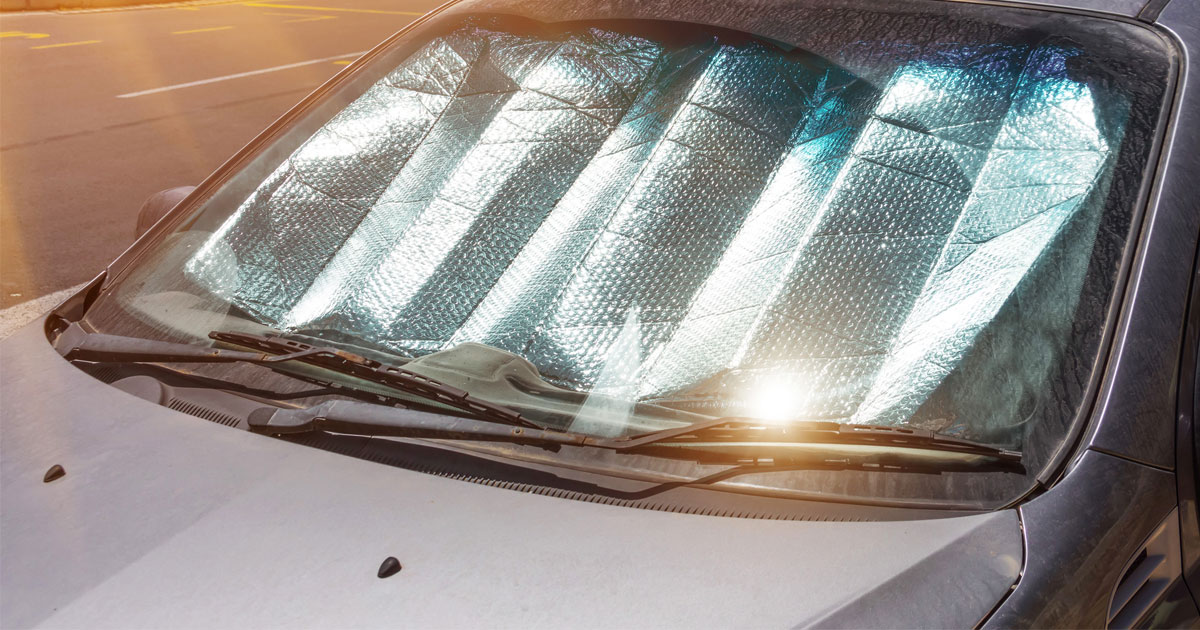
You can use some or all the tips above to protect all parts of your car from the Arizona heat.
Here are some of the most common questions people ask regarding sun protection.
Q: How Often Should I Assess My Car’s Sun Protection?
A: There is no set schedule you should use to apply protective measures to your car’s components. In Arizona, it’s important to stay vigilant as possible because of the intensity of the sun’s rays. If you notice your car’s paint or headlights are fading, your engine is running hot, or your AC is not keeping you cool, you should aim to resolve the issue as soon as possible. These issues can become increasingly severe the longer your car is exposed to the sun. Take steps before the heat of the summer and pay attention throughout the year so you can prevent issues.
Q: Is Car Paint Restoration Necessary?
A: Car paint restoration may not be necessary to keep your car running smoothly, and regular washing and waxing can help prevent sun damage for as long as possible. However, if the sun’s rays have oxidized the paint and you want to improve the look of your car, car paint restoration services could be beneficial. Restoring your car’s finish can make your car look new again and may even improve your car’s value.
Q: Is It Worth It to Spend Money on Car Sun Protection?
A: Absolutely. In fact, it’s worth it for both you and everyone else on the road. If your headlights are oxidized and cloudy, this can create a safety hazard for everyone involved. Similarly, if your AC is strained due to the heat, you can keep yourself and your passengers safe and healthy by addressing AC issues and keeping your car protected. If you take care of your car and protect it from the Arizona sun, you’ll be driving your car for much longer and maximizing your investment.
Protect Your Car from the Arizona Sun
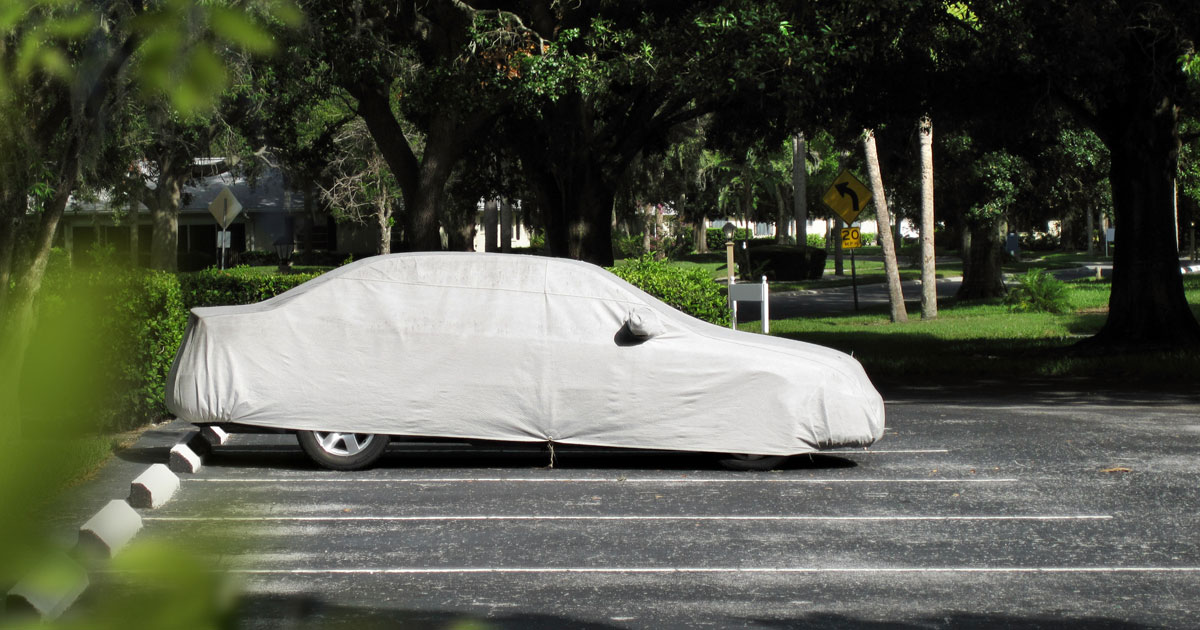
You spent a lot of money on your car, so it’s important to take care of it. The sun can be especially hard on your car in Arizona, but there are ways to protect it. Follow these tips and protect your investment. Make our site a regular stop for diy car hacks and tips.
*Editor’s Note: This article was originally published and has been updated January 25, 20223.
I’m a kid at heart disguised as an auto researcher and business owner. I’ve always enjoyed providing insight in the form of reviews (anime, video games, autos, etc.) When I’m not researching, I’m spending time with my family, driving my Dodge Challenger, riding my motorcycle, and finding new entrepreneurial pursuits.
